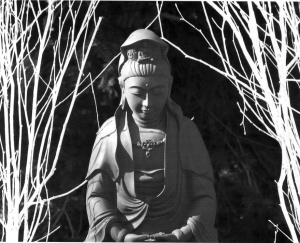Suvannakaratthera Vatthu
Ucchinda sinehamattano
kumudam saradikamva panina
santimaggameva1 bruhaya
Nibbanam sugatena desitam.
santimaggameva1 bruhaya
Nibbanam sugatena desitam.
Dharma companions is a blog focusing on Dharma activities, information dissemination and bringing awareness to the multifaceted aspects of Buddhism for the community from Shah Alam Buddhist Society (SABS). Postings should be of interest to Buddhist and anyone who seeks information on Buddhism. As the title suggest, we also aim to be a companion to those who seeks our company in this path that we undertake. May you be well, happy and peaceful.

by Kooi F Lim, The Buddhist Channel, Dec 8, 2016Kuala Lumpur, Malaysia -- In Nalanda University's website, it introduces the institution as thus: The University is inspired by and aspires to match the ancient Nalanda which was an undisputed seat of learning for 800 years till the twelfth century, CE.  But not all is well with the reincarnation of this famous ancient university. But not all is well with the reincarnation of this famous ancient university.On November 23rd, Nobel laureate Prof Amartya Sen resigned from the governing board. He was the inaugural chairman of the Nalanda Mentor Group (NMG) which governed the establishment of Nalanda U. |
 Part of the Buddhist path may be to come to terms with our own immaturity, having to realise that maybe we’re not always right and we’re not always kind. Sometimes in fact we’re downright foolish and unkind. Maybe we don’t mean to be, but we are. In the past we have justified our actions, perhaps, but through awareness we can notice this justification process going on. And even though it might be rather disturbing we face this reality because we want to know the nature of existence and the nature of ourselves. That wish for truth overrides our petty motives and we’re willing to look.
Part of the Buddhist path may be to come to terms with our own immaturity, having to realise that maybe we’re not always right and we’re not always kind. Sometimes in fact we’re downright foolish and unkind. Maybe we don’t mean to be, but we are. In the past we have justified our actions, perhaps, but through awareness we can notice this justification process going on. And even though it might be rather disturbing we face this reality because we want to know the nature of existence and the nature of ourselves. That wish for truth overrides our petty motives and we’re willing to look.


There, they will be greeted by hundreds of monastics and lay practitioners, including many venerable elders from Thailand and Vietnam, who over the last few days have been making the journey by land and air to greet him and pay their respects. We are very happy that Thay is still able to make such a journey, to offer his presence in Asia and be closer to his homeland at this time.
We are profoundly grateful to Thay’s friends who have pledged contributions to enable him to realize his wish. If you would like to participate in this historic journey, and make your own contribution to support Thay, you are warmly welcome to do so, via the Thich Nhat Hanh Foundation ($) or the Plum Village Website (€), with the label: “TNH Thailand 2016”.